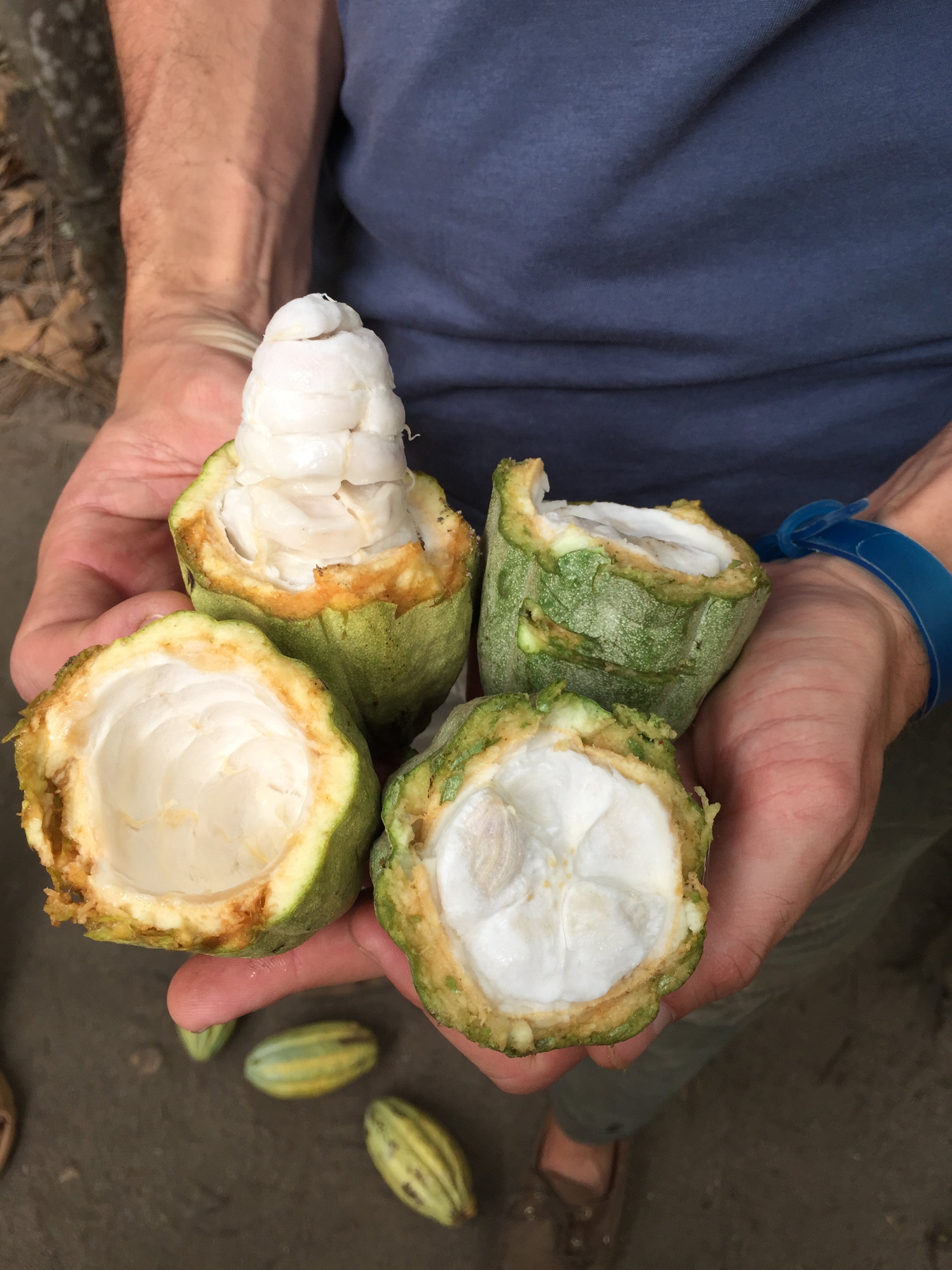Heavy metals, such as cadmium, occur naturally in soil and can sometimes be detected in cocoa depending on where it is grown. So unfortunately you can never say that there are 0% heavy metals in something grown on open ground. However, our cocoa beans from Tanzania and Uganda have been shown to have very low levels of heavy metals.
Lead in chocolate can have several causes, and it is often related to the environment in which the cocoa is grown, as well as handling during and after harvest. Here are some of the most common causes:
1. Pollution from the environment
Air pollution: Lead can be spread through the air from industries, vehicles or other sources and land on the fruits of cocoa trees.
Soil contamination: If the soil contains lead (for example, due to past use of lead-based pesticides or pollution from mining), it can be taken up by the cocoa trees, although this is less common.
2. Post-harvest contamination
Drying: If cocoa beans are dried on the ground in areas with contaminated soil or dust, lead can stick to the surface of the beans.
Packaging and transportation: Lead can be introduced via contaminated equipment or materials used during handling, storage, or transportation.
3. Natural in the environment
In some cases, lead may be naturally present in very small amounts in the local soil or environment where the cocoa is grown, but this is usually less significant compared to other factors such as drying and handling.
All cocoa beans are shelled before being ground, which further contributes to minimizing the risk of lead contamination in the final product.
If you want to read more about heavy metals in cocoa, you can explore this informative article from Uncommon Cacao or this video by an industry colleague that explains the topic further.
What do the regulations say about cadmium?
The EU has strict rules on how much cadmium can be found in food, including chocolate. The limit for cadmium in finished chocolate products is 0.8 ppm (parts per million). However, cadmium levels vary depending on where the cocoa is grown. Cocoa beans from certain regions of Latin America, particularly Ecuador, have been known to contain higher levels of cadmium, as the soil there naturally contains more of this element. According to Uncommon Cacao , cocoa farms in regions such as Africa, particularly Tanzania and Uganda, rarely have problems with cadmium, and levels are well below EU limits.
For us, this is a peace of mind. We work closely with producers like Kokoa Kamili in Tanzania, ensuring that our products not only taste great but are also safe to enjoy. Our cocoa beans are regularly tested to ensure they stay within approved limits, which is part of our commitment to quality and transparency.
How we work with this
Regular testing from our partners, such as Kokoa Kamili, shows that the beans, year after year, have exceptionally low levels and are well below the EU limits. We also ensure that batches of beans are tested before they reach our factory here in Österlen.
Flavanols and health – is chocolate healthy?
When it comes to flavanols, a type of antioxidant often mentioned in connection with cocoa, we have not tested our products specifically for these substances. Our focus has always been on taste rather than health benefits, but given the high cocoa content and quality of our beans, we can assume that our chocolate contains relatively high levels of flavanols compared to many commercial chocolate products.
We don't add any extra cocoa butter, lecithin or other fats to our dark chocolate, which means you get the purest and most powerful chocolate experience possible. Understanding where our beans come from and how they're handled is just as important to us as making them taste amazing.
Why transparency is important to us
One thing that sets our production apart is that we have full transparency throughout the entire process, from the bean to the finished chocolate. Many market players buy their cocoa through intermediaries and cannot always account for where the beans come from, how they are grown or how they are processed. This makes it difficult to control parameters such as heavy metal levels and other potential health aspects.
For us, transparency is important, and we believe it makes a difference – both for the taste and for you as a consumer. Creating chocolate is not just about making something delicious, but also about protecting people, the environment and health.


